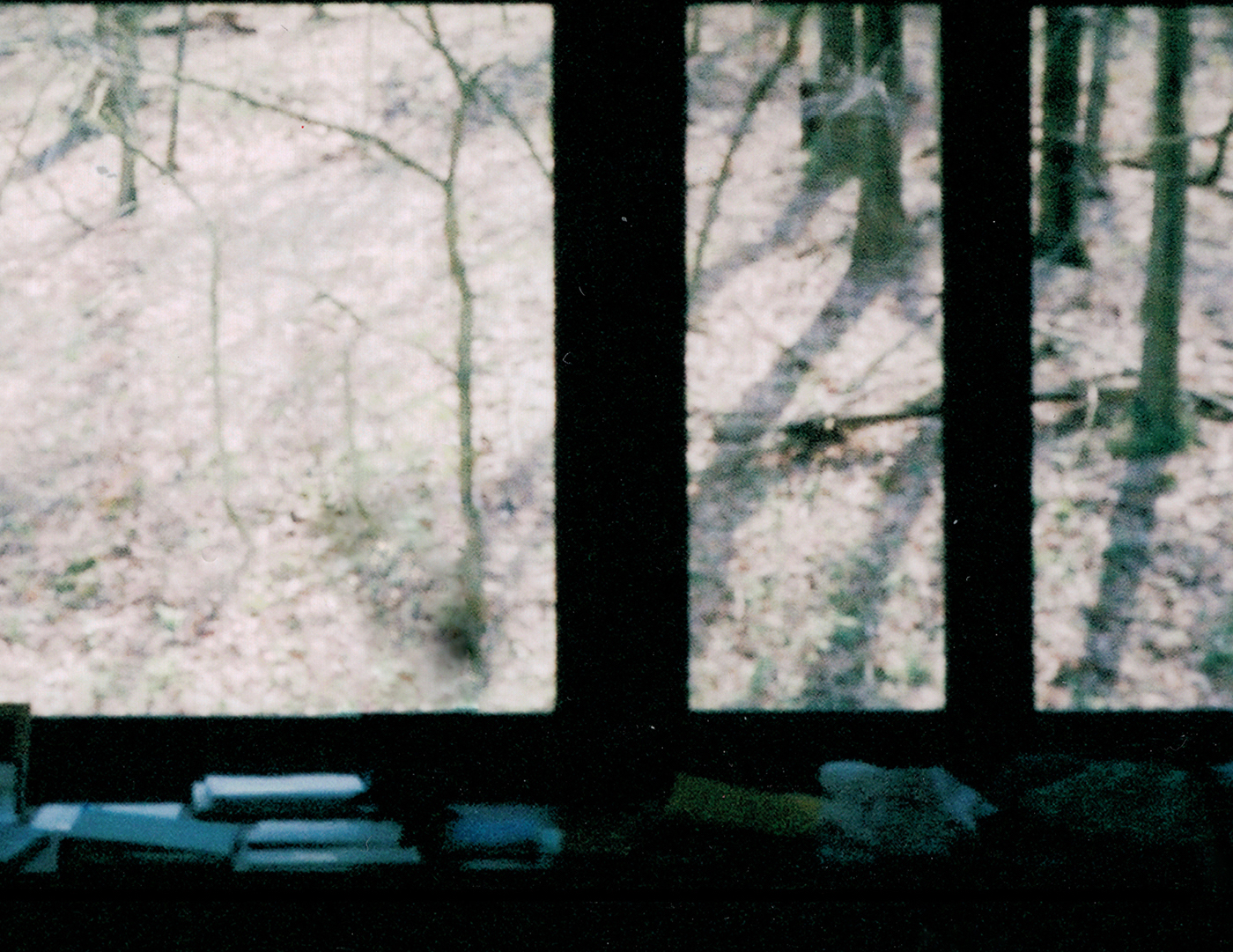*The Third Room is accessible at www.andreaparkins-thirdroom.com
Andrea Parkins: "Sonic Spaces for the Stray”: (Dif)Fusing Dis-location in Sound Installation and Performance
This CD recording re-imagines Two Rooms from the Memory Palace, my electroacoustic fixed-media composition that employs piano, synthesizer, electronic feedback, field recordings and amplified objects as its sonic materials. Structured as a long-duration, cyclically repeating 8-channel work, Two Rooms was designed for diffusion through adjacent acoustical spaces that sonically respond to each other in real-time interaction, thus enabling shifting and sometimes startling sonic juxtapositions to take place; the intention was to imply poetic interrelationships between site and time, and between gestural trace and acoustical space.
Two Rooms from the Memory Palace was composed during residencies at Q-02 Workspace for Experimental Music and Sound Art (Brussels) and Harvestworks Digital Media Arts Center (New York City), with work-in-progress presentations at both locations. It premiered in 2015 at the New York Electronic Art Festival, and was later site-configured for the Akousma Festival in Montreal as a work for 40 loudspeakers and solo performer. It has additionally been presented at festivals in Oslo, Bolzano and Berlin.
For the New York Electronic Art Festival, and in subsequent iterations of Two Rooms from the Memory Palace, I included a “third room”: an additional and simultaneously-playing audio installation that acts as a de-centered sonic disturbance in relation to Two Rooms' saturated sound world. The Third Room is a catalogue of sonic gestures and audio snippets that I have been recording and accumulating for the past 25 years, which is presented as a randomized playlist.* This archive of fragments focuses on the interplay between sonified objects, gesturing bodies and idiosyncratic acoustic spaces, and represents my longterm investigation of audio poetics: What do these sounds mean in relation to each other as they appear, one after the other, in no order that can be predicted? And what does it imply when they emerge and join—or alternatively, intervene and resist—an immersive sonic situation?
In determining how to present both Two Rooms from the Memory Palace and The Third Room so that they could be more widely experienced by listeners (therefore, outside of the presentation context of a long duration fixed-media work), it was necessary to address issues inherent in translating, adapting, or "re-imagining" a spatial audio composition—meant to be experienced live in a physical space and entered into by audiences at any point in the time of its sonic unfolding—as stereo recordings. This includes determining the most appropriate formats for the recordings' dissemination, with the understanding that these formats will have their own defacto limitations. I hoped to convey the sensation of Two Rooms from the Memory Palace's slow moving timbral shifts, and the juxapositions between and emergences from tonal material, pink noise, and sub-frequencies created from pitched-down piano recordings, and also to offer a means by which listeners could experience The Third Room as a quiet yet persistent sonic disturbance in relation to Two Rooms' sonic material.
With this in mind, I edited the files from Two Rooms, recomposing this material into a piece that is 53:47 minutes in duration, which is long enough to represent the cycles of repeating sonic material in the work and its slow harmonic evolution, yet succinct enough for release on CD. Additionally, I determined that the 63 short pieces presented in The Third Room should be released via a weblink that could maintain the identity and dissemination of the work as a random playlist of sonic fragments from my archive of samples and recordings. As a means of engaging with the interaction of sonic material from these two elements of the project, via a text box on The Third Room's webpage, I suggest to potential listeners that they may wish to diffuse that material while listening at the same time to Two Rooms from the Memory Palace on a separate device. Of course, this underscores my hope that listeners will utilize loudspeakers rather than headphones.
In a sense, the relationship of the two formats utilized in disseminating Two Rooms from the Memory Palace and The Third Room offers a way forward to bring work that is predicated on presence and immersion to audiences who might not be able to experience the work in a live situation. This may be especially apt when considering the past 18 months, a period when many composer/performers and sound artists have found that there have been limited possibilities to record and present their works to live audiences. This has been due to mandated Covid-19 related restrictions that have meant that artists and technicians could not work together in the same room, performers could not meet to rehearse, and audiences could not congregate to experience work in public spaces.
For artistic researchers who currently do not, or who in the future may not have access to public space where audiences can experience their fixed-media works in sound, and who under such circumstances are open to alternative means of disseminating their work, offering elements of their spatial audio works via the mixing and layering of sonic material in multiple and simultaneous formats affords possibilities to present (at least) aspects of their work to wider audiences. It also affords listeners the possibility to explore their own agency regarding how and where the material is situated within private space.


